How to Prepare for Emergencies in Your New Home (Part 1)
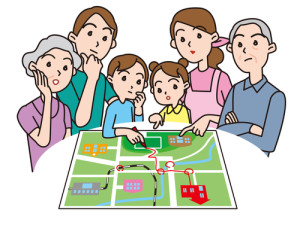 When you move into your new home, you may not think to revise and update your emergency plan, but natural disasters strike without warning. Avoid being caught without a plan in place at your new address. If you don’t have a plan, you and your home might be at risk. You may need the help of a hurricane home rebuilding service if your home was totally wrecked or ruined by this disaster.
When you move into your new home, you may not think to revise and update your emergency plan, but natural disasters strike without warning. Avoid being caught without a plan in place at your new address. If you don’t have a plan, you and your home might be at risk. You may need the help of a hurricane home rebuilding service if your home was totally wrecked or ruined by this disaster.
Here are ten steps to take to make sure you are ready the day you move in and continue staying prepared to keep your family safe.
Plan for safety and make a plan:
Sounds simple, right? Despite all of the natural disasters, fires, storms and mishaps in the news, many people do not have a plan for where to go, what to do, and how to reconnect with family members.
1. Learn what disasters affect your area and stay in the loop to receive early warning. Local city or community websites often provide information about natural disasters affecting your area. Use your community’s resources to prepare.
- WEAs: The national weather service provides free Wireless Emergency Updates (WEAs)—text message warnings and updates customized to your area. Check with your wireless carrier to make sure your device is WEA-capable and the service is enabled. Capable devices automatically receive government updates.
- Check out apps like Weather Bug and Simple Weather Alert that offer weather warnings straight to your phone or desktop.
- Listen to NOAA Weather Radio for information.
2. Know where to find shelter locations and learn how to “shelter in place”: Make sure you know where in your home is the safest and what community resources you can rely on to help you if you are not able to get home. If you have children, investigate the emergency response plan at their school to double-check their safety outside the home.
- Hurricanes: Turn off propane tanks and small appliances. Switch your fridge and freezer to the highest setting and secure them closed if possible (if the power goes out you’ll want the cold to last as long as possible). Close all windows, doors and hurricane shutters. If possible, board up any windows without hurricane shutters (hurricane specific items to keep in the kit discussed below).
- Tornadoes and Thunderstorms: Know where your safest underground shelter is at work and at home, i.e.: basement, storm cellar, etc. If you do not have an underground shelter, find your most protected interior room such as a closet, hallway, or bathroom. Just make sure not to be close to windows because these can shatter. If windows get damaged after a storm, make sure to contact professional window contractors for clean up and Storm Window Repair services.
- Floods: When you receive a flood warning, whether at home or outside, move immediately to higher ground to avoid slip and fall injuries. If you are outdoors, be aware of drainage channels, canyons, or streams nearby. They fill with water quickly and may cut off your evacuation route.
- Earthquakes: Secure furnishings, decor, and appliances to avoid damage or injury during ground movement.
- Safe Spots: Know the safe spots in your home—inside walls and under furniture—and areas in your home to avoid near hanging objects, windows, and mirrors.
- Self Protection: When an earthquake starts, drop to your hands and knees and move to the nearest safe spot immediately while covering your head and neck. Secure yourself and continue bracing your head and neck.
- Fire: When a fire occurs in your home, get out and stay out. Move to safety before calling 911. Create a map of your home and memorize all possible exits to escape the fire. Practice low-crawling and Stop, Drop & Roll. Select a meeting place for your family so everyone knows where to go once they get out safely. Make sure as well that the fire door is safe and fully functional, it’s not enough that the door itself is in an acceptable condition. If you find any aspect of your fire door is not as it should be, you may contact a fire door repair specialist to undertake appropriate repairs rapidly, bringing your door back into a safe state. After the fire has been extinguished, you may have to resolve smoke and soot damage, you may need a restoration service like this smoke damage restoration services in New Jersey.
- Evacuation Preparedness: City or community-wide evacuations can be chaotic and scary; keep yourself calm and safe by preparing ahead. Make sure your safety kit (below) is accessible in the event you need to evacuate quickly. Keep extra fuel available for your vehicle—you may not have enough warning to get to a gas station before needing to evacuate. Visit your local community website to learn the evacuation procedures and locations for your area so you know what to do. Obey evacuation orders immediately. Stalling to “see if you really need to” puts yourself and others in danger and taxes emergency personnel unduly.
Compliments of Virtual Results




 An FHA mortgage is a loan insured by the Federal Housing Administration. The FHA, an agency of the U.S. Department of Housing and Urban Development, insures loans so that lenders will offer appealing rates to less qualified borrowers at a lower down payment. Typically, an FHA loan requires a down payment of just 3.5 percent and allows sellers and lenders to offer special incentives. In return, FHA-approved lenders may charge a higher interest rate, so borrowers should shop for the best rate among FHA-approved lenders. Your payment includes a premium amount to pay for the mortgage insurance the FHA provides.
An FHA mortgage is a loan insured by the Federal Housing Administration. The FHA, an agency of the U.S. Department of Housing and Urban Development, insures loans so that lenders will offer appealing rates to less qualified borrowers at a lower down payment. Typically, an FHA loan requires a down payment of just 3.5 percent and allows sellers and lenders to offer special incentives. In return, FHA-approved lenders may charge a higher interest rate, so borrowers should shop for the best rate among FHA-approved lenders. Your payment includes a premium amount to pay for the mortgage insurance the FHA provides.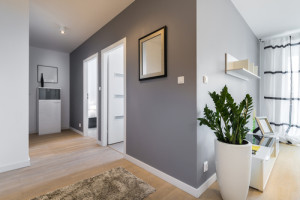 Out with the old … beige, cafe au lait, pale mocha, bone … favorite neutrals for the past decade, may give way to more sophisticated gray-based neutrals. So you might ask, isn’t gray just black and white mixed? Well, yes and no.
Out with the old … beige, cafe au lait, pale mocha, bone … favorite neutrals for the past decade, may give way to more sophisticated gray-based neutrals. So you might ask, isn’t gray just black and white mixed? Well, yes and no. As temperatures begin to rise, the lure of sparkling sunlight reflected off rippling blue water draws many homeowners to look for
As temperatures begin to rise, the lure of sparkling sunlight reflected off rippling blue water draws many homeowners to look for  We all love a good pampering. Your home is no different. A little spring sprucing gives you house that extra special attention it needs. Whether you start on the inside or the outside, give your home some special treatment and it will reward you with more comfort, extra space and a bright, clean environment. We provide complete
We all love a good pampering. Your home is no different. A little spring sprucing gives you house that extra special attention it needs. Whether you start on the inside or the outside, give your home some special treatment and it will reward you with more comfort, extra space and a bright, clean environment. We provide complete  If you’re thinking of buying a fixer-upper for the first time, whether to live in yourself or to flip, doing some of the renovations yourself can be satisfying and economical. You’ve watched plenty of television shows where novices remodeled a house in two or three days, so how hard could it be? But, before you start tearing out walls and ripping up flooring, there are a few important renovation blunders to avoid.
If you’re thinking of buying a fixer-upper for the first time, whether to live in yourself or to flip, doing some of the renovations yourself can be satisfying and economical. You’ve watched plenty of television shows where novices remodeled a house in two or three days, so how hard could it be? But, before you start tearing out walls and ripping up flooring, there are a few important renovation blunders to avoid.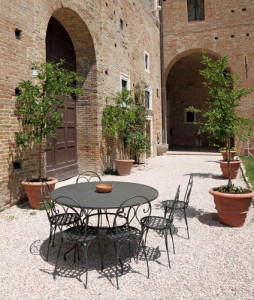 You’ve decided to make your new home as ecologically sustainable as possible. You’ve changed out the toilets for low-flow versions and added insulation, installed bamboo flooring, energy-efficient windows and natural gas appliances. Now, it’s time to tackle the yard. Before you tear out that water-guzzling turf, make a plan to replace it with an aesthetically pleasing low-maintenance xeriscape.
You’ve decided to make your new home as ecologically sustainable as possible. You’ve changed out the toilets for low-flow versions and added insulation, installed bamboo flooring, energy-efficient windows and natural gas appliances. Now, it’s time to tackle the yard. Before you tear out that water-guzzling turf, make a plan to replace it with an aesthetically pleasing low-maintenance xeriscape.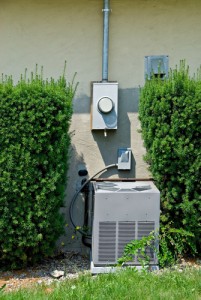 In preparation for warmer summer days, spring is the perfect time to have your air conditioner serviced by an
In preparation for warmer summer days, spring is the perfect time to have your air conditioner serviced by an 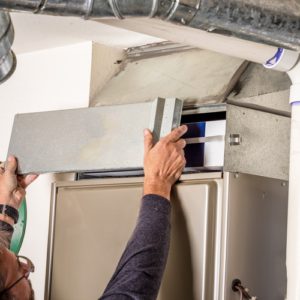 We’re heading into the hottest part of the year, so it’s unlikely you’re thinking too much about your home’s heating system. But if you’re house hunting this summer or you need to upgrade to a new system, now is the time to research and understand your options. In fact, you may find that you can get a break on the price of a new heating system or unit if you have it installed in the off-season. There are several types of heating systems available to homeowners and what are the common
We’re heading into the hottest part of the year, so it’s unlikely you’re thinking too much about your home’s heating system. But if you’re house hunting this summer or you need to upgrade to a new system, now is the time to research and understand your options. In fact, you may find that you can get a break on the price of a new heating system or unit if you have it installed in the off-season. There are several types of heating systems available to homeowners and what are the common  In the excitement of buying and decorating a new home, remember to plan for the long-term when you start landscaping. With the recent widespread drought problems, installing sustainable, drought-tolerant landscaping not only saves water, it means your efforts will survive season to season, saving you both time and money. If you live in a subdivision, you better talk to the property manager if they have an existing
In the excitement of buying and decorating a new home, remember to plan for the long-term when you start landscaping. With the recent widespread drought problems, installing sustainable, drought-tolerant landscaping not only saves water, it means your efforts will survive season to season, saving you both time and money. If you live in a subdivision, you better talk to the property manager if they have an existing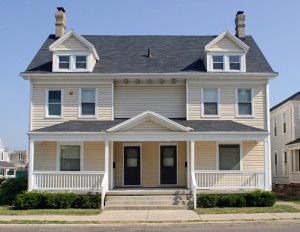 According to Freddie Mac, the Federal Home Loan Mortgage Corporation (FHLMC), multifamily rent growth should level out to its long-term average performance as interest rates increase. That does not mean that investing in a multifamily property is a bad idea, it just means that the supply and demand conditions are varying by location and adjusting to job growth or stagnation. Since most rental housing demand comes from 25- to 34-year-olds, the
According to Freddie Mac, the Federal Home Loan Mortgage Corporation (FHLMC), multifamily rent growth should level out to its long-term average performance as interest rates increase. That does not mean that investing in a multifamily property is a bad idea, it just means that the supply and demand conditions are varying by location and adjusting to job growth or stagnation. Since most rental housing demand comes from 25- to 34-year-olds, the 

 Catch Our Feed
Catch Our Feed Subscribe via Email
Subscribe via Email Follow Our Tweets
Follow Our Tweets Friend Us On Facebook
Friend Us On Facebook Watch Us On Youtube
Watch Us On Youtube